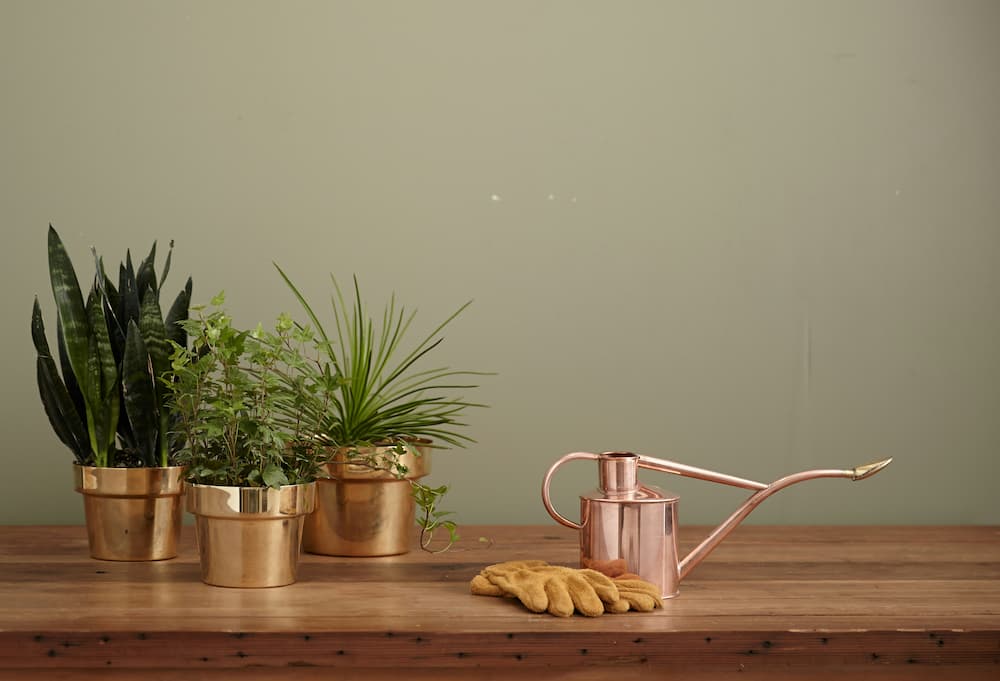After decades in the design wilderness, brass has returned with a sophistication that would surprise those who remember its 1980s excess. Today’s brass renaissance isn’t about ostentatious display or faux-gold glamour—it’s about rediscovering a material that bridges warmth and durability, tradition and innovation, luxury and livability in ways that few metals can match.
This revival reflects broader shifts in design philosophy toward materials that age gracefully, possess inherent character, and connect us to craftsmanship traditions spanning millennia. In an era of synthetic surfaces and disposable design, brass offers something increasingly rare: a material that becomes more beautiful with time.
Understanding Brass: More Than Metal, It’s Alchemy
Brass isn’t a pure metal but an alloy—primarily copper and zinc—whose proportions determine its characteristics, color, and performance. This compositional flexibility allows for remarkable variety within the brass family, from the pale gold of naval brass to the deep warmth of architectural bronze.
The copper content gives brass its distinctive warm tone and antimicrobial properties, while zinc provides strength and workability. Higher copper content creates richer, redder tones that develop more dramatic patinas, while increased zinc produces lighter, more yellow appearances that remain relatively stable over time.
This alchemical complexity means that no two brass pieces age identically. Composition, manufacturing process, surface treatment, and environmental conditions all influence how brass develops its patina, creating unique character that cannot be replicated in factory finishes.
The Patina Process: Beauty Through Time
Perhaps no aspect of brass generates more confusion—or more passionate appreciation—than patina development. Unlike materials that simply wear down, brass transforms, developing complex surface characteristics that can enhance rather than diminish its appearance.
Natural Patination Untreated brass begins changing within hours of exposure to air and moisture. The initial bright, golden appearance gradually softens as the surface oxidizes, developing subtle browns and deeper golds that add depth and complexity. This natural aging process can continue for decades, creating surfaces with remarkable visual richness.
In coastal environments, brass develops distinctive blue-green verdigris patinas that reflect the salt air’s chemical influence. While some view this dramatic transformation as damage, others celebrate it as nature’s contribution to the metal’s aesthetic evolution.
Controlled Patination Modern finishing techniques allow for controlled patina development, creating specific appearances without decades of natural aging. Chemical treatments can produce everything from subtle antiquing to dramatic verdigris effects, offering immediate access to brass’s aged beauty.
However, artificially aged brass often lacks the subtle complexity of naturally developed patinas. The most sophisticated approach involves combining controlled treatments with natural aging, creating foundation patinas that continue evolving over time.
Contemporary Applications: Beyond Traditional Boundaries
Today’s brass renaissance extends far beyond traditional applications like door hardware and lighting fixtures. Contemporary designers are discovering brass’s versatility in applications that would have seemed unconventional just a decade ago.
Kitchen and Bathroom Integration Modern brass faucets and fixtures offer warmth that stainless steel cannot match while providing durability superior to many alternative finishes. The key lies in selecting appropriate brass compositions and finishes for specific environments.
In kitchens, brushed or satin brass finishes hide water spots and fingerprints better than polished alternatives while complementing both warm and cool color schemes. Unlacquered brass develops protective patinas that actually improve performance over time, though this requires accepting visual change as part of the material’s character.
Architectural Hardware Excellence Contemporary brass door hardware represents perhaps the material’s finest expression in residential design. Modern manufacturing techniques create pieces with precision tolerances impossible in earlier eras, while traditional brass characteristics provide the satisfying weight and smooth operation that distinguish quality hardware.
The best contemporary brass hardware combines advanced engineering with timeless aesthetics, creating pieces that function perfectly while developing beautiful patinas that enhance rather than compromise their appearance.
Lighting Revolution Brass lighting fixtures have evolved dramatically from their traditional predecessors. Contemporary designs leverage brass’s excellent heat dissipation properties while exploiting its warm tones to create ambient lighting that enhances rather than overwhelms spaces.
Modern brass pendant lights, sconces, and chandeliers often combine different brass finishes and patinas within single pieces, creating visual complexity that adds interest without requiring ornate forms. The material’s reflective properties create warm, flattering light that few other metals can match.
Finish Varieties: A Spectrum of Possibilities
Contemporary brass finishing techniques offer unprecedented variety, allowing designers to specify exact appearances for specific applications and environments.
Polished Brass: Mirror Perfection Highly polished brass provides mirror-like reflectivity with warm golden tones. This finish requires lacquer protection to maintain its appearance, making it suitable for low-touch applications like decorative elements or protected hardware.
While dramatic and luxurious, polished brass demands significant maintenance to retain its pristine appearance. Consider this finish for statement pieces rather than everyday hardware.
Brushed and Satin Finishes Brushed brass textures scatter light to reduce glare while hiding minor scratches and water spots. These finishes provide brass’s warmth without polished brass’s maintenance requirements, making them ideal for high-use applications.
The directional grain of brushed finishes adds subtle textural interest while complementing both traditional and contemporary design schemes. Varying the brush pattern—from fine to coarse—creates different visual effects within the same basic finish category.
Aged and Antique Treatments Artificially aged brass finishes provide immediate access to patina effects that would naturally require years to develop. These treatments range from subtle darkening that suggests gentle aging to dramatic oxidation effects that simulate decades of exposure.
The most successful aged finishes combine multiple techniques—perhaps chemical darkening followed by selective polishing—to create convincing depth and variation that mimics natural patina development.
Living Finishes Unlacquered brass finishes are designed to change over time, developing natural patinas that reflect their environment and use patterns. These “living finishes” initially appear bright and uniform but quickly begin developing character through oxidation and handling.
High-touch areas like door handles develop distinctive wear patterns where oils from hands polish the brass back to bright metal, creating beautiful contrast with surrounding patinated areas. This evolution requires accepting change as part of the material’s appeal.
Design Integration Strategies
Successfully incorporating brass into contemporary interiors requires understanding how to balance its inherent warmth with other materials and finishes.
Mixed Metal Harmony Contemporary design embraces mixed metal palettes that would have seemed chaotic in previous eras. Brass pairs beautifully with stainless steel, creating warm-cool contrasts that add visual interest without conflict. Black iron provides dramatic contrast that emphasizes brass’s warmth, while copper and bronze create rich, harmonious combinations.
The key to successful metal mixing lies in maintaining consistent proportions and avoiding equal distribution. Let one metal dominate while using others as accents, or create clear zones where different metals predominate.
Color Palette Considerations Brass’s warm undertones complement both warm and cool color schemes, though the approach differs significantly. With warm palettes, brass provides harmonious reinforcement, while cool schemes benefit from brass’s contrasting warmth as a balancing element.
In neutral schemes, brass can serve as the primary color accent, providing visual warmth without requiring additional color elements. This approach works particularly well in minimalist interiors where material variation creates interest without pattern or color complexity.
Scale and Proportion Brass’s visual weight requires careful scaling to avoid overwhelming spaces. Large brass elements work well in spacious rooms with high ceilings, while smaller spaces benefit from more restrained applications.
Consider brass’s reflective properties when determining scale. Polished finishes appear more prominent than brushed or aged alternatives, requiring more careful proportioning to maintain visual balance.
Technical Considerations for Longevity
Understanding brass’s technical characteristics ensures successful long-term performance in demanding residential applications.
Composition Selection Different brass alloys suit different applications. High-copper content brass develops richer patinas but may be softer and more susceptible to corrosion in harsh environments. Lower-copper alloys provide greater durability but may patinate less dramatically.
For coastal applications, consider specialized marine brass alloys designed to resist salt corrosion while maintaining brass’s aesthetic characteristics.
Installation and Maintenance Proper installation significantly affects brass performance and appearance. Dissimilar metals in contact can create galvanic corrosion, while improper mounting can lead to stress cracking or loosening.
Maintenance requirements vary dramatically based on finish selection. Lacquered brass requires gentle cleaning to avoid damaging protective coatings, while unlacquered brass benefits from periodic waxing to control patina development.
The Sustainability Factor
Brass’s environmental credentials contribute to its contemporary appeal. As a copper-zinc alloy, brass is infinitely recyclable without quality degradation. Many contemporary brass fixtures contain significant recycled content, reducing environmental impact without compromising performance.
The material’s longevity represents another sustainability advantage. Quality brass fixtures often outlast their buildings, creating multi-generational value that amortizes environmental costs over extended periods.
Investment Value and Market Trends
Contemporary brass fixtures command premium pricing, but their combination of durability, beauty, and timeless appeal often justifies the investment. Unlike trendy finishes that may appear dated within years, quality brass maintains relevance across multiple design eras.
Market trends suggest continued growth in brass appreciation, driven by younger designers who appreciate its warmth and character. This growing demand supports continued innovation in manufacturing techniques and finish development.
The Emotional Connection
Perhaps brass’s greatest contemporary appeal lies in its emotional resonance. In an increasingly digital world, brass provides tactile satisfaction and visual warmth that synthetic alternatives cannot replicate. Its ability to develop character through use and time creates emotional connections that strengthen rather than diminish over years.
This emotional dimension explains why brass often becomes more beloved with age. Unlike materials that simply wear out, brass develops personality that reflects its environment and use, creating unique character that cannot be purchased—only earned through time.
Looking Forward: Brass in Future Design
The current brass renaissance shows no signs of slowing. Advancing manufacturing techniques continue expanding design possibilities while maintaining the material’s fundamental characteristics. Expect to see more sophisticated patination techniques, innovative alloy compositions, and creative applications that push brass beyond traditional boundaries.
Smart home integration presents new opportunities for brass lighting and hardware that combine traditional aesthetics with contemporary functionality. These innovations allow brass to remain relevant in evolving residential technology without compromising its timeless appeal.
The renaissance of brass represents more than a design trend—it reflects a broader appreciation for materials that improve with age, possess inherent character, and connect us to enduring craftsmanship traditions. In our quest for authentic, meaningful design, brass offers qualities that synthetic alternatives simply cannot replicate: warmth, character, and the promise of beauty that deepens with time.

